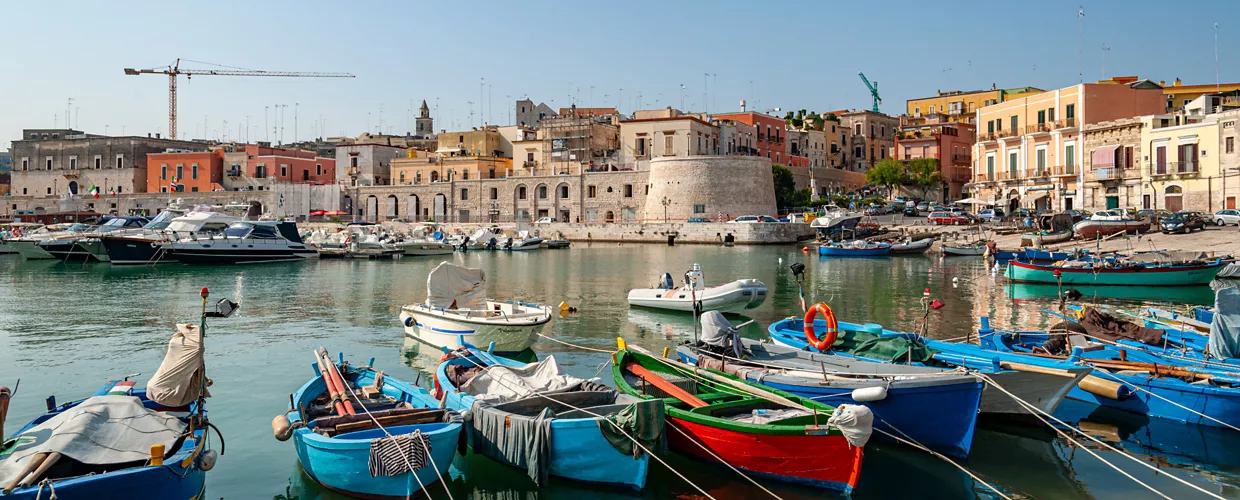This content was automatically translated. View the original text.


Overview
Although little is known about the origins of this busy coastal town, it may have arisen from an aggregation of farm estates following the Saracen incursions. The early Norman structures were modified by the Aragonese, who in the late 15th century built fortifications which are still visible, flanked by religious buildings and other structures erected over the centuries. The walk through the historic centre reveals interesting buildings, such as the 12th-century Church of St Margaret, with its unusual cross-shaped floor plan surmounted by a pyramidal dome. An impressive sight is the Swabian castle, whose main tower is home to an exhibition of folk art and culture. Behind it is the 11th-century Church of St Audoin. The main church is the Cathedral, built in the Romanesque style of the 11th and 12th centuries, with the adjacent bishop's palace. As you leave the town centre, you come to the large harbour, in the centre of which are the isolated remains of the 18th-century mooring bollards
In the countryside around Bisceglie, the fields of crops are dotted with farmhouses (tradition has it that there have been nine here, since the Middle Ages), watchtowers, a few "trulli" built to store tools, and four megalithic monuments dating from the Bronze Age (16th and 14th centuries BC), although originally there must have been more. The most important is the Chianca dolmen, consisting of an external corridor and a sepulchre consisting of four slabs, three wedged into the ground and one placed horizontally.
76011 Bisceglie BT, Italia